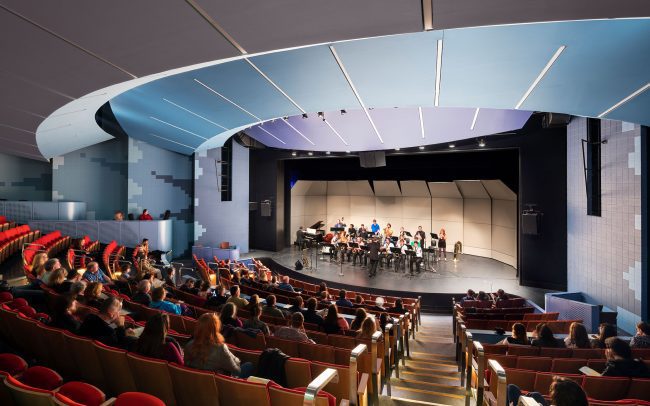Marlborough College, Memorial Hall
Marlborough College, Memorial Hall
Memorial Hall is Marlborough College’s principal memorial to the 749 men who gave their lives in World War I. The hall was built by Messrs Holloways of London at a cost of £53,000. The design was the result of a competition between Old Marlburian architects, the adjudicator being Sir John Simpson, President of the Royal Institute of British Architects. The winning design was that of William Newton. It was opened by H.R.H. The Duke of Connaught on May 23, 1925.
The hall stands to the west of the Court (at the center of the College) and is linked to the chapel by means of stone steps leading down to the its brick-paved forecourt. It was originally designed to have a maximum capacity of about 800. The hall itself comprises a semi-circular auditorium of stepped seats with an ambulatory at the rear to allow inspection of the 749 names carved in alphabetical order and without reference to rank around the inside of the back of the hall. At the back of the building, there is a separate entrance giving access to a series of music practice rooms located under the ambulatory.
Today the Memorial Hall is used for assemblies; some musical events, including the Marlborough College Concert Series; and other entertainment events such as the House Shout and the pupil-led Illumination.
Nearly 100 years of constant use has taken its toll. Diamond Schmitt Architects and FDA restored this magnificent building while also incorporating state-of-the-art technology to support the performing arts — a £5M project. The restoration was completed in time to commemorate the end of the First World War in July 2018.
- Client: Marlborough College
- Architect: Diamond Schmitt Architects
- Completion Year: 2018
- Location: Marlborough, Wilts, United Kingdom
- Capacity: 560 seats



